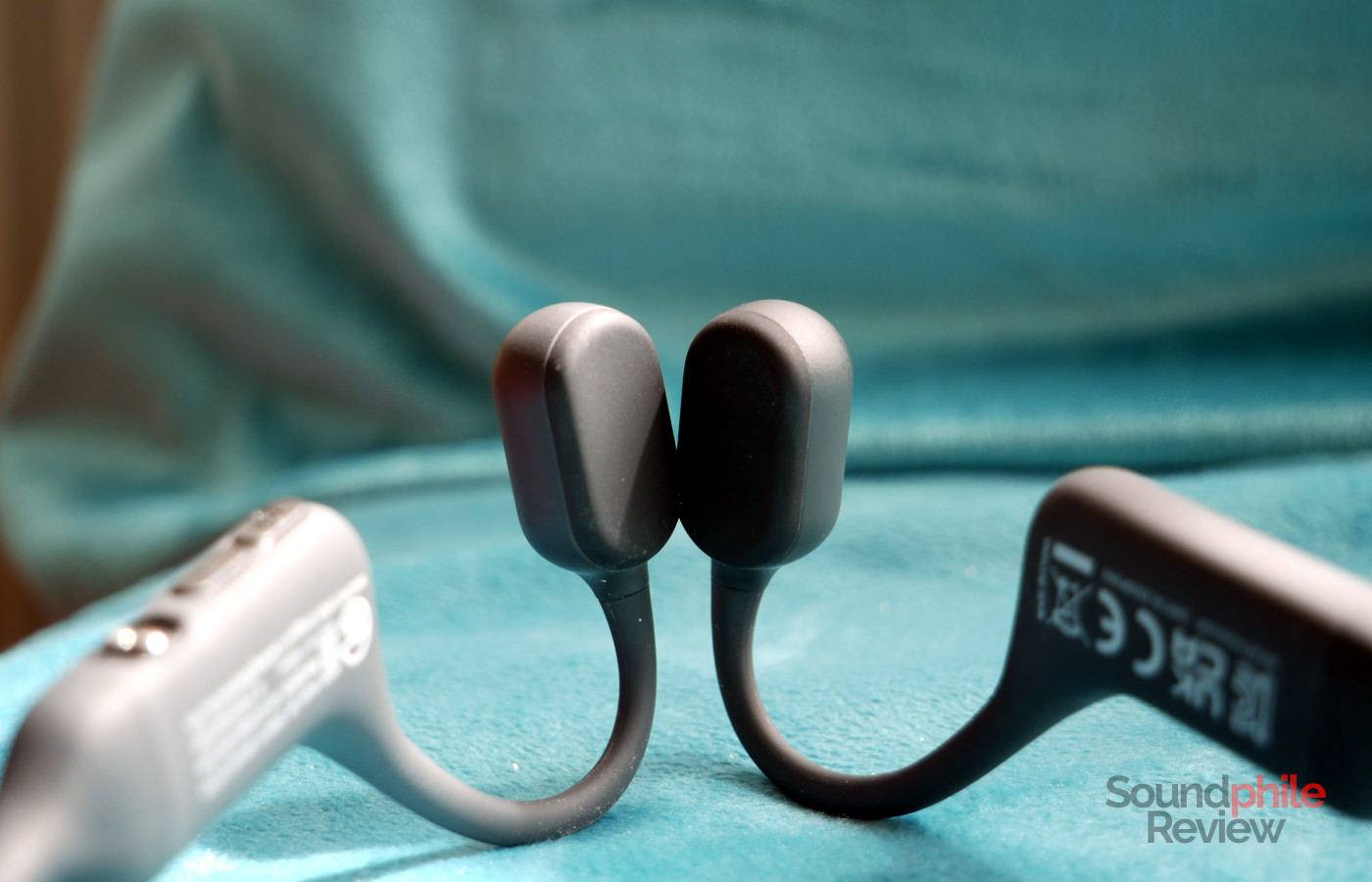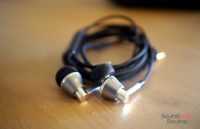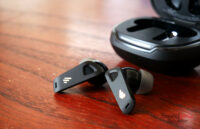Bone conduction headphones are quite an interesting category of devices, as they theoretically offer you the ability of listening to music while also retaining full awareness of what’s happening around you, as the ear canal is not blocked in any way. This works by basically inducing vibrations in the bones of your skull, which in turn make the ossicles in your inner ear vibrate so that you perceive that as sounds. It’s quite an interesting concept and at this point it has been proven to work by several different companies. HAYLOU, a manufacturer of earphones and smartwatches, appears to be at its first experience in this product category with the PurFree BC01 and it does a lot of things well, while some others display their inexperience.
Disclaimer: I received a free unit from ZBANX in order to write this review. Additional info is available on HAYLOU’s website. The BC01 retail for $119.99, but with the code HAYLOUBC01 you can get them for $74.79.
TL;DR: recap
| Pros |
Cons |
| + Very comfortable
+ IP67 certified + Decently long battery life |
– Can be uncomfortable while wearing glasses
– Not suitable for music listening – Issues with tuning – Random hiss during calls |
Rating: 6.5/10
Packaging & Accessories

Inside the cardboard box are the headphones themselves, plus a USB cable to charge them (with a proprietary magnetic connector), as well as a manual. HAYLOU also includes a pair of foam earplugs, which they recommend using in noisy environments like aeroplanes to isolate yourself from the noise. I find this to be a bit contradictory, though: these heaedphones are made specifically for the purpose of using them without isolating yourself from your surroundings and they make a lot of compromises to reach that goal, so while it’s nice Haylou included these earplugs, I find this inclusion to be a bit weird.
Design & Comfort

The HAYLOU PurFree BC01 are designed like virtually every single bone conduction headphone out there: a metal headband that goes around the back of your head (should we call it a neckband?), with hook-like ends that rest on your pinnae. There’s nothing too special to see here in terms of pure design, although it has to be said that it won an iF Design Award. In terms of materials, though, the PurFree BC01 stand out due to their use of titanium for the headband: the advantages of that include the fact that it’s an incredibly lightweight material, and that it is very hard to deform.
Speaking of materials, HAYLOU highlights the fact that they’ve used soft-touch silicone to wrap the body of the device, as it provides better comfort (and better feel to the touch) than alternatives. I can confirm that it does indeed feel quite good and it doesn’t cause discomfort even after a couple of hours of usage.

Overall, the PurFree BC01 appear to be quite well assembled and they do look like a premium product for this. They are also IP67-certified, so you can wear them during workouts or in other situations where there’s water involved – you can even submerge them up to 1 m for a maximum of 30 minutes.
Comfort is, generally speaking, very good: the combination of materials and design make the PurFree BC01 quite comfortable to use, even for longer periods of time. This design also proves quite good for those who simply don’t like having something around (headphones) or inside (earphones) their ears, so it’s quite a valid alternative to traditional designs in this sense.

This isn’t to say that there aren’t any issues. As a wearer of prescription glasses, I unfortunately can’t afford the luxury of taking them off. In my case, this poses some challenges with the comfort offered by the HAYLOU PurFree BC01. On one hand, they press against the glasses’ sticks on one side and on the pinna on the other, directly causing discomfort after just a few minutes of usage; on the other hand, the presence of the sticks makes it so that the pressure on the head is not applied correctly and therefore sound is not reproduced as well as it should be. For some reason, in my case the right “pod” doesn’t adhere well to my head, making it so that I hear correctly on the left hand side, but not on the right hand side; this difference is reduced a lot if I remove my glasses, but it never goes away completely. In this case, the fact that you can’t deform the titanium frame is actually a con – I can’t get the right fit for my head shape.
Isolation is null by design, so you can stay aware of what’s around you. This is especially useful if you want to e.g. go around on the streets while staying aware of incoming vehicles, or hear announcements in stations and airports.
Extra Features & Battery Life
The HAYLOU PurFree BC01 use a Qualcomm QCC3044 chipset that allows them to offer compatibility with the Bluetooth 5.2 standard as well as with the SBC, AAC and aptX codecs. The chip also supports dual device connections, which means you can keep the headphones connected to two sources at the same time (e.g. your phone and your computer), which is quite useful. The range is very good overall and so is the stability of the connection; in my usual test of walking around the house, the signal stays strong but for the farthest parts where there are multiple walls in-between the headphones and the source.
The microphone works decently well in relatively silent environments, but faces some challenges when used in noisier ones. Overall it works well and it allows you to take calls without worries.

Battery life is rated by the manufacturer at 8 hours, which is a realistic figure that falls in line with my experience. One thing I have noticed is that the headphones do not power off automatically even if they’re not connected to any source, so you have to remember to power them off after you’re done using them. It takes about one hour to completely charge the battery and 15 minutes of charging give you around 2 hours of battery life.
Sound & Specs
I’ve tested the HAYLOU PurFree BC01 using both my computer as well as my phone (Honor 9).
HAYLOU PurFree BC01 |
| Frequency response | N/A |
| Impedance | N/A |
| Sensitivity | N/A |
| Bluetooth version | 5.2 |
| Codecs | SBC, AAC, aptX |
Although HAYLOU touts the PurFree BC01 as headphones that you can use to listen to music with, the reality is quite different. Bone conduction technology is in fact far from ideal for reproducing the whole spectrum of audible frequencies, as the lower ones require a lot of energy and a lot of parts movement and are therefore quite difficult to reproduce. And that’s exactly the issue here: anything that’s under ~300 Hz is simply not reproduced, so that lows completely disappear from music. This makes most tracks not only sound weird, but also quite fatiguing if they’re not already focused exclusively on vocals, and even in that case male vocals are not reproduced to their fullest. In short we might say this: you shouldn’t use the HAYLOU PurFree BC01 to listen to music if you care about sound quality.
HAYLOU markets the PurFree BC01 as headphones for doing sports, as an example to listen to music while running and retaining awareness of your surroundings at the same time. While there is something to be said about the usefulness of a product like this in such a situation, the PurFree BC01 are not a substitute for “real” headphones and earbuds. In terms of pure sound quality, there has not been massive progress in this category and the difference with traditional headphones is huge, so you should be aware of that: don’t expect them to sound just as well. Among bone conduction headphones they’re good, but that’s a low bar to clear to begin with.
Having said this, the HAYLOU PurFree BC01 work decently for taking calls. Human voices are rendered sufficiently well, although they tend to lack the lower part and therefore sound a bit shrill at times; overall, though, the quality is not too distant from that of a phone’s earpiece, so it’s acceptable for this kind of usage.
There are, however, some things to note. A theoretical advantage of bone conduction headphones is also that they should cause no fatigue to your ears due to the way the technology works, but I found this not to be true. High frequencies are quite emphasised and that makes voices sibilant, even when they’re normally not. I’ve followed a few conferences and made a few calls using the HAYLOU PurFree BC01 and the result has always been the same: I found that after a while I was feeling fatigued due to the excessive focus on high frequencies. While it is partly connatural to the technology, because it’s much easier to reproduce high frequencies with the way bone conduction works, this could and should be corrected by using the integrated DSP so that this excessive focus on treble is avoided.
There is also an intermittent high-pitched hiss during calls that quickly becomes fatiguing. This noise is also recorded by the microphone, as people I talked to told me, so it appears to be an issue with how the PurFree BC01 deals with phone calls (this hiss is not present when not using the BC01).
Final Thoughts
In the past I tried my girlfriend’s AfterShokz 2 bone conduction headphones and I was unimpressed by the sound quality. Those are quite old, though, so I thought that things had changed in the meantime and this is why I was quite curious to try the HAYLOU PurFree BC01. The reality, however, is that bone conduction technology is still quite far from being viable for listening to music. It is good enough for calls and other vocal-focused content (e.g. watching videos), but that’s about it. The PurFree BC01 are quite good overall, but you should keep in mind that they are not a replacement for your “traditional” earphones. They can be an option if you want something that allows you to remain aware of your surroundings, as they work really well in that regard.
Comfort is quite good overall and proves once again that this kind of design is quite effective at providing a good wearing experience. On the other hand, though, there is a good chance that you won’t be able to use these headphones to their fullest if you wear prescription glasses like me, or if you want to use sunglasses.
All in all, then, the HAYLOU PurFree BC01 are quite a mixed bag. While they do some things really well, they fall short on others. If you want an affordable bone conduction headset that you can use to take calls, or to run in urban environments, these can be a decent option, but those are the only use cases in which I can recommend them. “Traditional” headphones and earphones should still be preferred if sound quality is paramount to you.







Very good and accurate review of the bone conducting headphone.